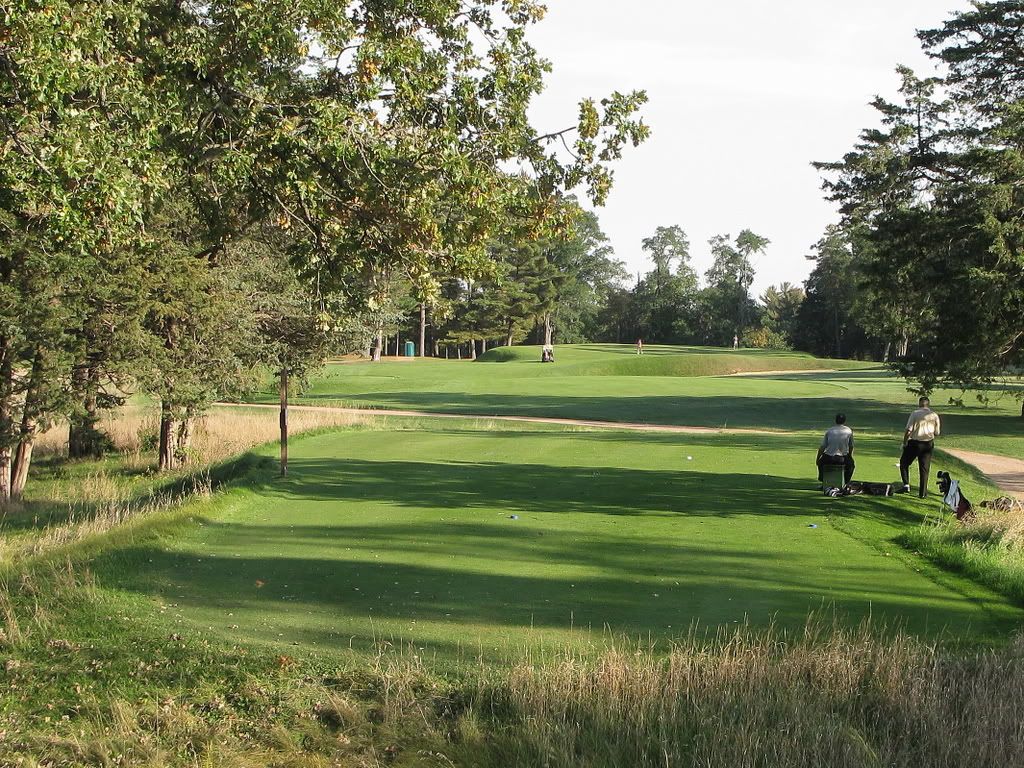Length alone is not enough, since they’re too often just connector holes routed over flat uninteresting land. To work, they must be routed over an interesting piece of ground. I think that to be special, that shot must also be a test of nerve, not just of distance.
Ian:
Really? I think you can create a terrific long par 3 over fairly dull land. Sure, you might want to have the land within 30-40 yards of the green hold some interesting contours or whatnot, but the 200 other yards between tee and green strikes me as not all that consequential, or at least important, in creating a great long par 3.
Here are some examples:
The par 3 17th at Milwaukee Country Club (Alison and perhaps Colt); this is a stern, uphill par 3, played at 224 yds for the recent USGA Mid-Am. The land is not abruptly uhill, but rather a gradual rise that ends with a large green -- somewhat wider than it is deep -- with a very deep bunker wrapped around its right side. The green doesn't have significant internal contours, but is tilted noticeably from left to right, toward the cavernous bunker. (Alison's routing of MCC is very good, and the last two holes -- 17 and 18 -- are routed in such a way that the golfer goes from one of the lower points on the course to its highest point over these two holes.) The land here plays an integral part in the hole, because it demands for most golfers at least another full club, perhaps two if wind is a factor. But the land itself is not that interesting; what is interesting and makes the hole very good is the length of the hole (demanding a long iron or fairway wood) is joined by a tough green and a fairly penal bunker.

Here is Lawsonia's 10th, a terrific long par 3 (239 yds) set on perhaps even less interesting land. What makes this hole terrific is Langford's use of a bunker/mound short right of the green to create visual deception (there is quite a bit of room between the far side of the bunker, and the green), some penal bunkering left of the green, and an exceptional green (maybe the best on the course, which is saying a lot) that is huge, tilted from back to front, and full of some interesting contours.



Finally, the 5th at Langford&Moreau's unheralded Spring Valley, near the Wisconsin-Illinois border, a slightly downhill par 3 of 210 yds that often plays longer as it often goes directly into the prevailing winds from the west. The golfer's obvious thought on the tee is the carry over water, and avoiding anything yanked left. But the green sits up from the land surrounding it, and thus Langford once again creates some nice visual deception, as the golfer on the tee may think the shot is all downhill, when in reality the land before the green can shrug off or impede a running shot into the green. The green here is quite good, very large and full of subtle contours. In short, the carry over the water is what the golfer may remember about this hole, but it's arguably not the most significant factor in how it's played.
Behind the green looking back at the tee.
